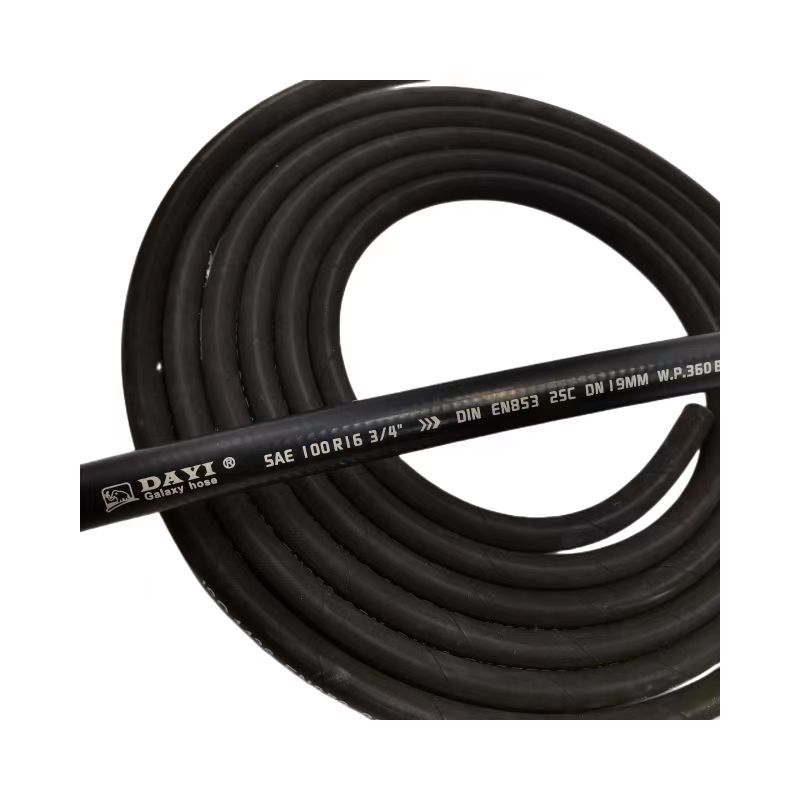8 月 . 16, 2024 09:03 Back to list
Choosing the Right Air Hose Size for Your Project A Guide to 1/4, 3/8, and More
Understanding the 1/4 Inch, 3/8 Inch Air Hose Choosing the Right Hose for Your Needs
Air hoses are essential tools in various industrial, automotive, and home applications. They serve as the conduits for compressed air, powering everything from pneumatic tools to air brakes in heavy machinery. When selecting the right air hose, the size and material are significant considerations. Two common sizes are 1/4 inch and 3/8 inch, each serving different purposes and fitting distinct needs. This article explores the characteristics of these air hoses, helping you make an informed decision for your specific application.
The Basics of Air Hose Sizing
Air hoses are typically measured by their internal diameter. The 1/4 inch and 3/8 inch sizes refer to the diameter of the hose through which compressed air flows. Choosing the right size is not just about ensuring it fits, but it significantly influences the air flow rate, pressure drop, and overall efficiency of your air tools.
1/4 Inch Air Hose Advantages and Applications
The 1/4 inch air hose is commonly used in lighter-duty applications. It is ideal for operating smaller pneumatic tools such as nail guns, airbrushes, and tire inflators. One of the primary advantages of the 1/4 inch size is its lightweight and flexible nature, making it easy to handle, store, and transport. This hose size can effectively deliver air pressure suitable for these lighter tools, usually operating at a pressure of 90 to 120 PSI.
However, there's a trade-off the smaller diameter may limit the volume of air that can flow through the hose. For applications requiring longer lengths or higher air consumption, you might experience a significant drop in performance due to pressure loss. Thus, while the 1/4 inch hose is excellent for light tasks, it may not suffice for larger or more demanding pneumatic tools.
1/4 3/8 air hose

3/8 Inch Air Hose Power and Performance
On the other hand, the 3/8 inch air hose is designed for more robust applications. It allows for a greater volume of air to flow, which translates to higher performance for heavy-duty pneumatic tools like impact wrenches, sanders, and spray guns. If you find yourself frequently operating tools that require more air pressure or if tasks demand a sustained air supply, a 3/8 inch hose can make a significant difference.
Additionally, when using a 3/8 inch hose, you can minimize pressure losses over longer distances. This is particularly advantageous in large workshops or job sites where tools are used far from the air compressor. Although it is bulkier than its 1/4 inch counterpart, the benefits of enhanced performance and efficiency often outweigh the inconvenience of carrying a heavier hose.
Material Matters Choosing the Right Composition
Beyond size, the material of the air hose also plays a crucial role in its functionality. Common materials include polyurethane, rubber, and PVC. Polyurethane hoses are lightweight, flexible, and resistant to kinks, making them suitable for various applications. Rubber hoses, while heavier, offer durability and resistance to wear and tear, ideal for high-pressure environments. PVC hoses are generally cost-effective and suitable for light-duty uses.
Conclusion
When selecting between a 1/4 inch and a 3/8 inch air hose, consider the nature of your tasks, the tools you will use, and the distance from your air compressor. The 1/4 inch hose is perfect for low-demand tasks and portability, while the 3/8 inch hose shines in heavy-duty applications where performance and air flow are priorities. Understanding these differences ensures that you choose the most effective and efficient air hose for your specific needs, ultimately enhancing your work efficiency and productivity. Investing in the right air hose can lead to smoother operations and a better overall work experience.
-
EN857 2SC Hydraulic Hose Suppliers OEM & China Manufacturers
NewsMay.30,2025
-
51mm Hydraulic Hose Manufacturer China OEM Durable & Custom Solutions
NewsMay.30,2025
-
OEM Rubber Air Hose Supplier Durable Custom Solutions
NewsMay.29,2025
-
High-Pressure Wrapped Cover Steel Wire Spiral Hydraulic Hose Supplier
NewsMay.29,2025
-
Rubber water suction and discharge hose
NewsMar.07,2025
-
SAE 100 R6/EN 854 R6 Fibre Braided Oil Hose
NewsMar.07,2025



